Swiss Chard cans up mellow and sweet.
It’s ready to use in a multitude of dishes, from soups to stews to casseroles to risottos.
Chard is a low-acid food and can only be pressure canned; otherwise, freeze it. Here we walk through the USDA directions for pressure canning it.
Quantities of Swiss Chard needed
Numbers are approximate guidelines.
On average, as a very rough guideline, expect to need about 1 ¾ kg (4 lbs) of Swiss Chard per 1 litre (US quart) jar of canned Swiss Chard.
- 12.5 kg (28 lb) of Swiss Chard = 7 litres (US quarts) canned Swiss Chard
- 8 kg (18 lbs ) of Swiss Chard = 9 x half-litres (US pints) canned Swiss Chard
- 1 US bushel Swiss Chard = 8 kg (18 lbs) = 3 to 9 litres (US quarts) canned Swiss Chard
The recipe
Jar size choices: Either half-litre (1 US pint) OR 1 litre (1 US quart)
Processing method: Pressure canning only
Yield: varies
Headspace: 3 cm (1 inch)
Processing pressure: 10 lbs (69 kPa) weighted gauge, 11 lbs (76 kpa) dial gauge (adjust pressure for your altitude when over 300 metres / 1000 feet)
Processing time: Half-litres (pints) 70 minutes; litres (quarts) 90 minutes
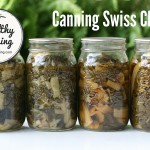
Canning Swiss Chard
Ingredients
Instructions
- Wash a small amount of Swiss Chard at a time, to ensure you are being thorough. Wash in a sink or tub of water, then drain and rinse until rinse water runs clear of any dirt or grit.
- Trim off and discard tough ribs and stems.
- Put about ½ kg (1 lb) of Swiss Chard at a time in a cheesecloth bag, or a basket, and steam until well wilted -- about 3 to 5 minutes.
- Pack loosely into ½ litre (US pint) jars or 1 litre (US quart) jars.
- Leave 3 cm (1 inch) headspace.
- Top up with clean boiling water (such as from a kettle, for instance), maintaining headspace.
- Debubble, adjust headspace.
- Wipe jar rims.
- Put lids on.
- Processing pressure: 10 lbs (69 kPa) weighted gauge, 11 lbs (76 kpa) dial gauge (adjust pressure for your altitude when over 300 metres / 1000 feet)
- Processing time: half-litre (US pint) jars for 70 minutes OR 1 litre (US quart) jars for 90 minutes.
Nutrition
Processing guidelines below are for a weighted-gauge pressure canner. See also if applicable: Dial-gauge pressures.
| Jar Size | Time | 0 to 300 m (0 - 1000 feet) pressure | Above 300 m (1000 ft) pressure | |
|---|---|---|---|---|
| ½ litre (1 US pint) | 70 mins | 10 lbs | 15 lb | |
| 1 litre (1 US quart) | 90 mins | 10 lbs | 15 lb |
Reference information
How to pressure can.
When pressure canning, you must adjust the pressure for your altitude.
More information about Salt-Free Canning in general.
Recipe notes
The processing time is so long because the leaves actually become quite dense in the jars; adequate time is required to ensure proper heat penetration throughout.

Red Chard Before Canning
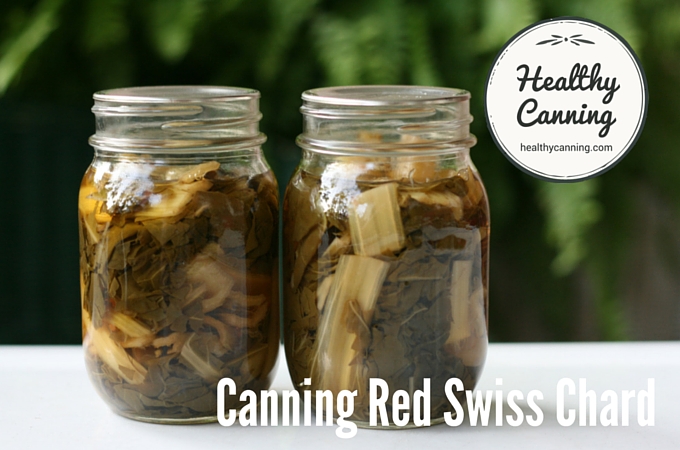
Red Chard after canning. The pronounced red will be gone.
Recipe source
Spinach and other greens. United States Department of Agriculture (USDA). Complete guide to home canning. Agriculture information bulletin No. 539. 2015. Page 4-19.
Modifications: none.
Nutrition
Per 125 g, drained (1 cup. About one half of a ½ litre / US pint jar):
- 35 calories, 313 mg sodium
- Weight Watchers PointsPlus®: 0 points (Swiss Chard is free on Weight Watchers).
* Nutrition info provided by https://caloriecount.about.com
* PointsPlus™ calculated by healthycanning.com. Not endorsed by Weight Watchers® International, Inc, which is the owner of the PointsPlus® registered trademark.
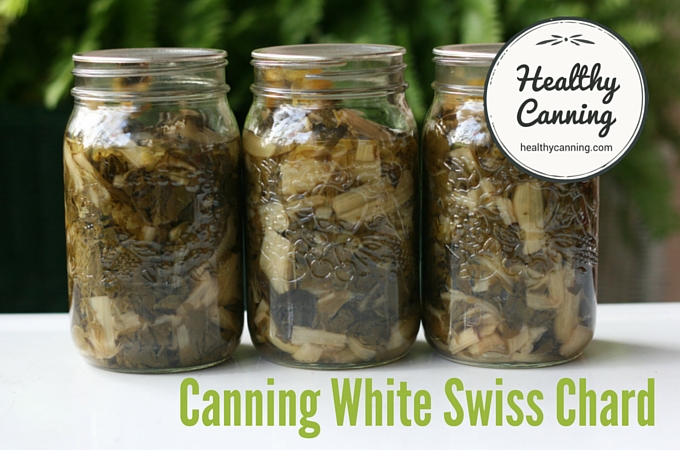
Canned white Swiss Chard
Ball’s directions compared to USDA directions
The above directions are based on the USDA instructions for canning greens.
The Ball Blue Book (37th edition, 2014, page 113) also gives directions.
Ball’s directions differ from those of the USDA in two ways:
- The USDA says to steam blanch the greens in a bundle or basket. Ball says to simply boil them;
- The USDA says the jar filling liquid should be “fresh boiling water”. Ball says you can use fresh boiling water, or, the water you boiled the greens in.
Ball Blue Book (2014) directions for greens
Wash greens thoroughly under cold running water, drain. Cut off large, tough stems.
Put greens in a large saucepan. Add just enough water to prevent sticking. Cook greens until wilted, stirring to cook evenly and to prevent sticking. Cut through greens several times using a sharp knife. Bring additional water for canning to a boil in a separate saucepan, reduce heat to a simmer (80 C / 180 F). Keep water hot.
Pack hot greens into a hot jar, leaving 2 cm (1-inch) headspace. Add ½ teaspoon salt to pint jar, 1 teaspoon salt to quart jar if desired. Ladle hot cooking liquid or boiling water over greens, leaving 2 cm (1-inch) headspace.
Remove air bubbles. Clean jar rim. Center lid on jar and adjust band to fingertip-tight. Place jar on the rack in pressure canner containing (5 cm) 2 inches of simmering water (80 C/ 180 F). Repeat until all jars are filled.
….. Process pint jars 1 hour and 10 minutes or quart jars 1 hour and 30 minutes. [1] Ball Blue Book. Muncie, Indiana: Healthmark LLC / Jarden Home Brands. Edition 37. 2014. Page 113.
Ball / Bernardin Complete Book (2015) directions for greens
The Ball / Bernardin Complete Book, however, wants fresh water in the jars:
Wash greens thoroughly in several changes of water. Trim and discard large tough stems. In a stainless steel saucepan of boiling water, working in batches (1 lb / 500 g at a time), blanch greens until they are well wilted, about 3 to 5 minutes. Drain, discarding cooking liquid. Using tongs, transfer greens to a cutting board. using a sharp knife, coarsely chop. Pack hot greens into hot jars… lading in fresh boiling water…” [2]Kingry, Judi and Lauren Devine. Ball / Bernardin Complete Book of Home Preserving. Toronto: Robert Rose. 2015. Page 389.
Further reading
National Center for Home Food Preservation. Got the Wintertime “Greens”? 28 January 2014.
References

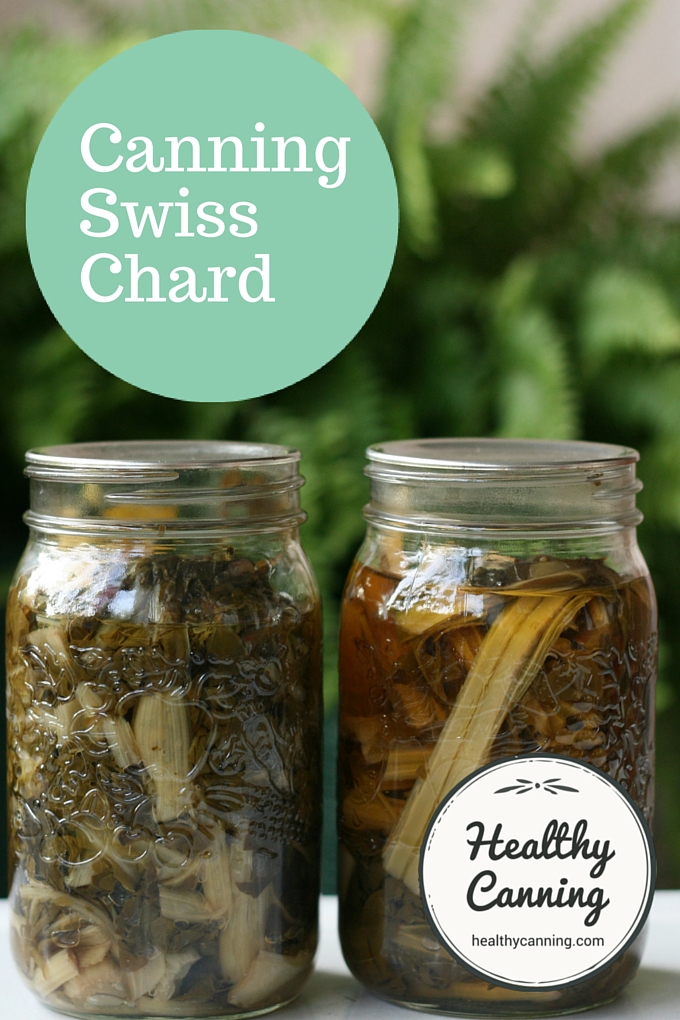
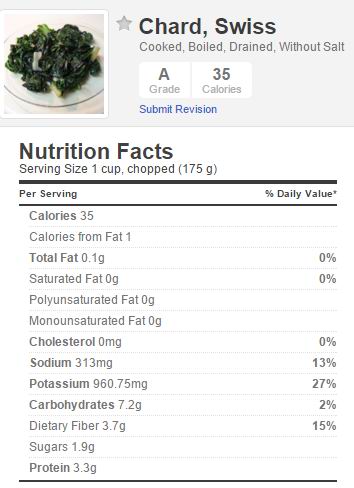
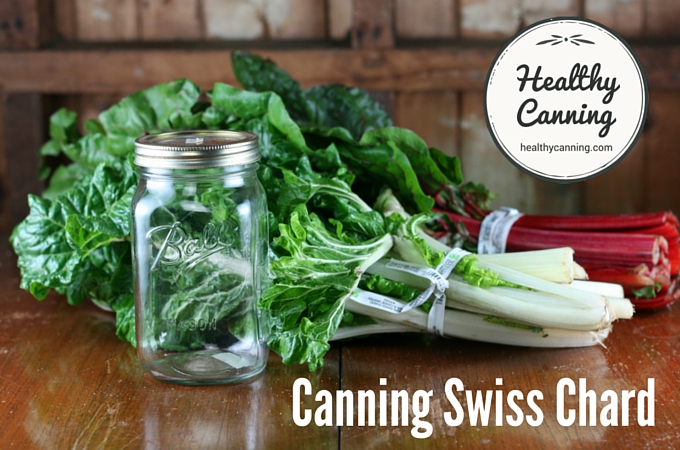
Pam Sloan
Hello! My swiss chard was processed according to the above directions in pint jars. When I removed them from the pressure canner the water was stained brownish and the jars have only 1/2-3/4 liquid in them leaving quite a bit of the greens above the liquid line. They all sealed properly. Is this normal?
Healthy Canning
This can happen. The jars are safe.